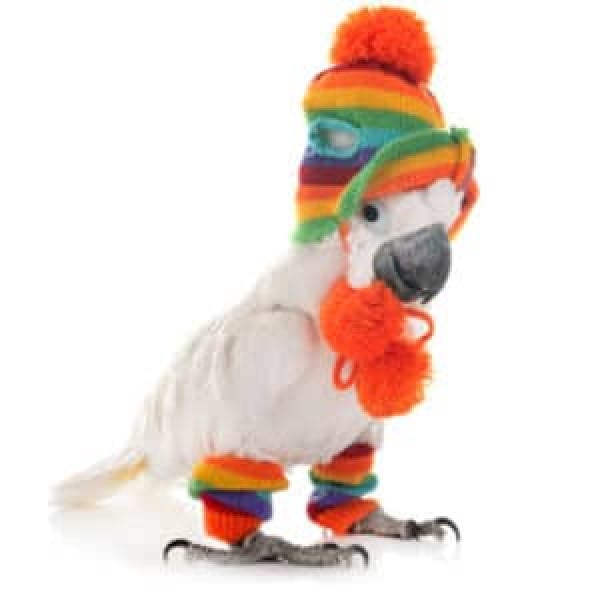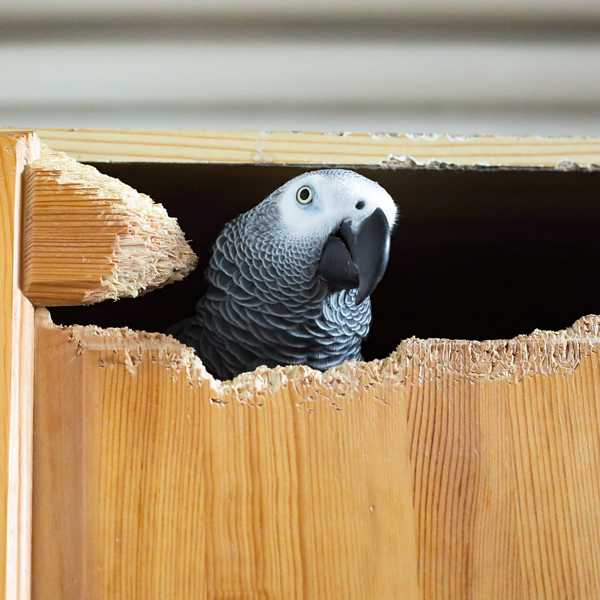Last Updated on by Mitch Rezman
Mitch, I am horrified at the answer you gave the woman who wrote to you asking what temperature is safe when taking her Parrot camping.
Your answer was very open-ended–too open to interpretation.
I have a very extensive science and medicine background so your answer horrified me because there are so many people of all ages with such differing temperature tolerances.
I have seen on more than 2 occasions people outside in weather in the 20s-30s Fahrenheit temperature range out and about without a jacket and in a thin shirt or top.
They didn’t even exhibit goosebumps.
I asked them if they weren’t cold and they said “No”; one of them was even eating an ice cream cone!
Please, please, revise your answer immediately and give a fixed–not an ambiguous–range because otherwise, you could cause the deaths of many Parrots with all kinds of people interpreting what you wrote their way.
Women in menopause or people of either gender or any age who have an endocrine malfunction can handle super-cold temperatures.
At Last, The Secret To How Do Birds Stay Alive During Winter Is Revealed
I know of one female with an endocrine impairment who in 9-12 degrees Fahrenheit winter weather had no heat on in the house and had windows blasting cold air into the house and she said she was “hot”!!!
People after drinking alcohol can feel quite warm.
And on and on.
Not dropping below 70 degrees Fahrenheit is a safe answer but you should also name the upper tolerance range.
Many Parrots at 86 degrees start panting heavily.
Whenever I fly with my beloved 26-year-old Macaw (37 1/4 inches long with a 3-feet wingspan) I always hand in a printed letter to the airline captain delineating the temperature range that is safe for my Parrot in the cargo bay.
My very best,
Christie
Hi Christie and thank you for your passionate response. I can see by the initials after your name you are a highly educated person. Unfortunately, you’ve chosen to debate me using anecdotal anthropomorphic stories about Homo sapiens the single human species.
Attempting to compare one human species against 12,000 bird species is a fool’s errand.
Please allow me to expand upon the ability of our avian friends how to survive in what you would think to be inhumane conditions.
Let’s start with the Rüppell’s vulture that has been reported by many commercial airline pilots seen at altitudes of Over 35000 Feet.
The temperature at that altitude is typically about -56.5°C (-69.7°F) yet there they are, with bald heads flapping their wings 7 miles above the earth – it’s a DNA thing.
I can hear you from here saying “They are crazy wild birds I’m talking about pet birds”.
So I ask you to consider the simple Quaker parrot-like the blue one trying to destroy all of his toys, over my left shoulder.
Quakers BTW, are indigenous to South America as is your beloved macaw.
In Chicago where I spent the better part of six decades of my life and many other cities around the United States, feral flocks of Quakers can be found.
These birds live and survive in large colonial nests but still have to go out to forage for food in Chicago winters that consistently provide Sub-Zero temperatures for 3 or 4 months a year.
In this excellent post entitled Our Tribute To Birds In The Military, I state:
“Human B-17 pilots and crews had to wear oxygen masks and heated suits at 20,000 feet. Pigeons were fine with just their, well, feathers.
As high as 35,000 feet with temperatures 30 below and colder, these durable little creatures would sit with eyes half-closed and fluffed up feathers for warmth”
This is not anecdotal, the information is part of the 500,000 plus pigeons used in World War II by American and European military Armed Forces.
Birds have different respiratory systems, digestive systems, and Integumentary systems than humans so a person trying to make a comparison is quite frankly, daft.
Lastly, “I always hand in a printed letter to the airline captain delineating the temperature range that is safe for my Parrot in the cargo bay”.
If you look at my LinkedIn profile you’ll see early on my family business was the sale of aircraft.
I can tell you unequivocally that aircraft cargo bays are not heated and between the noise, darkness, and temperature, shipping a bird in a commercial aircraft’s cargo bay is simply the most inhumane way to transport a FID (Feathered Kid).
I hope this clears things up for you.
Best
MitchR
Author Profile
Latest entries
 The Traveling BirdJune 26, 2025Can You Name 5 Parrot Species That Are Living Wild in the USA?
The Traveling BirdJune 26, 2025Can You Name 5 Parrot Species That Are Living Wild in the USA? Bird BehaviorJune 26, 2025How is it Parrots Are Problem Solvers Social Animals and Even Use Tools?
Bird BehaviorJune 26, 2025How is it Parrots Are Problem Solvers Social Animals and Even Use Tools? Bird & Parrot AnatomyJune 25, 2025How a Tiny Chemical Modification Makes Parrots Nature’s Living Paintings
Bird & Parrot AnatomyJune 25, 2025How a Tiny Chemical Modification Makes Parrots Nature’s Living Paintings PigeonsJune 20, 2025How Do Parrots Thrive in Cities Outside Their Native Habitats?
PigeonsJune 20, 2025How Do Parrots Thrive in Cities Outside Their Native Habitats?





Lynne
28 Mar 2021I don’t have any initials to put after my name, and with my years and years of working with parrot rescue,(just spent the last hour washing the walls behind cages), quite frankly, I don’t feel I need them. You are both somewhat right on the topic. First let’s address the airline situation. Nothing written on a piece of paper given to anyone, will make one iota of difference to the conditions under which that macaw travels. I agree that shipping any animal in a cargo hold is a horrible thing to do to them,a nd she should stop that as quickly as possible and never do it again.
Now we have broached the subject of what is comfortable, as well as safe for a parrot. although Quakers ( aka Monk parrots) live all over the northeast and midwest in the the winter, they do have huge nests and shared body heat to keep them warm. Yes, they go out foraging, but that is for short periods of time, and as you know very well, flying, which is the most strenuous thing ( besides laying an egg) that parrots can do, creates body heat, just like a runner in a marathon. Given there druthers, I would imagine most Quakers would prefer a nest sight very close to food, like maybe right outside the nest opening. Other birds live in the cold climes as well, and also, many die from exposure every year, as all birders know.
So, let’s address the last part of this. whether a parrot can exist in a certain temperature or not, is not the whole question. Of even more importance is what is comfortable for the parrot. They are constrained by their situation. If a wild bird, parrot or not, is uncomfortable, they will fly away and look for someplace more comfortable. Since our pets can’t do that, it behooves us to try to make theiruaas comfortable as is reasonably possible. To that end, I agree that the standing outside without a jacket idea is a good one, but has to be tempered by the polar bears among us. So, start with low sixties for an hour or so is reasonable for most parrot to stay comfortable. If you see them fluffing their feathers ( providing extra insulation) and hunkering down, or pulling their feet up alternately and often, then they are, at the least, uncomfortably chilly, and you should change the temperature.
Some birds are fine in the fifties, and likewise some are more tolerant of the nineties as well, but remember, they can’t just leave if they get too hot or too cold. These are tropical animals, geared by their nature to prefer that setting, even as regards heat, they don’t stay out in the blistering sun for long periods of time. They forage, then set in a tree or other shady area to cold down. Some dunk in whatever water is available. But…those are animals with the ability to pick their own surroundings, at least to a point. If we are incharge of everything in their lives, then it should be as close to neutral for them as possible. Again, I never met a parrot that had a problem with the low sixties up to the low eighties. Hope this helps somebody without causing any drama.